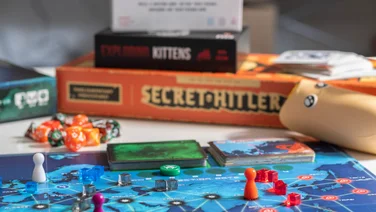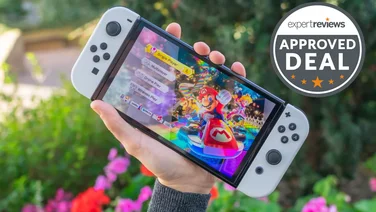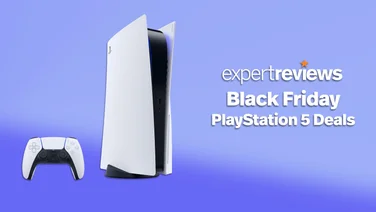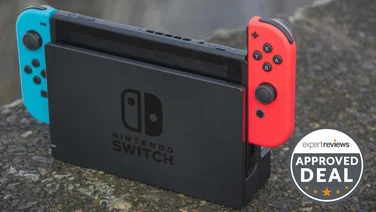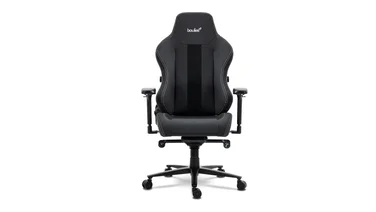To help us provide you with free impartial advice, we may earn a commission if you buy through links on our site. Learn more
















The year 2025 is going to be remembered for many things, but one of the more positive bits of news is the long-awaited release of the Nintendo Switch 2. Millions of words have been written about it, analysing and breaking down its new features and improved hardware, but the only real way to know if it’s any good is to try it out – and that’s exactly what I’ve just had the chance to do at London’s Excel exhibition centre.
What do I think of it? The phenomenal success of the original, launched eight years ago, means that Nintendo has had to strike a balance — a balance between familiarity and innovation, between improvement and price — and that means some trade-offs. There are, inevitably, some slightly disappointing aspects of the new console, such as the lack of an OLED display and no notable improvement on the battery life front.
But I’m here to tell you that the Nintendo Switch 2 is truly a successor worthy of the name. It’s bigger, better, faster and – yes – it still has that sprinkling of magic dust that Nintendo always seems to bring to its console launches.
Here are my highlights:
1. That big new, gorgeous screen
What’s the best thing about the Nintendo Switch 2? Well, you might be surprised, given how many people have been moaning about the lack of OLED in the new console, but it’s the screen.
It’s bigger than before and sharper, too. And not before time: the original’s 7in LCD was, to be frank, outdated when it first came out, and it has looked more and more dated as the years have passed. It was dim, and the air gap between the panel and the touchscreen surface meant that glare has always been an issue when gaming in brightly lit areas.















To a certain extent, the same is true of the Switch 2. Arguably, any new handheld device launching in 2025 should have an OLED display. It’s what all the high-end and many mid-range phones come with, and some budget laptops even have OLED screens these days.
However, I’m not sure many people are going to complain too much when they set eyes on the Switch 2 because it is a vast improvement. It measures 7.9in across the diagonal (up from the first Switch’s 6.2in), and its resolution has been bumped up to 1080p. While that extra size and sharpness is very welcome, what is immediately apparent is that the bigger benefit is that it’s brighter and much more vibrant than before.
The colours really pop, and motion instantly feels smoother, thanks to its support for HDR and 120Hz. The candy colours of Mario Kart World look fantastic, and the scenery whizzes by with a smoothness modern gamers will appreciate.
2. Mouse controls — yes, this is BIG
My second favourite thing about the Switch 2 (I debated whether to put it at the top or not) is mouse control. This was something nobody predicted before the first teaser trailer at the beginning of 2025, but it’s the feature I’ve most wanted to try out since I found out it was going to form a major part of the Switch 2’s feature set.
You’ll have to snap on a pair of skates to the bottom of each of the new Joy-Cons to use them as mice (there’s an optical sensor in each controller so left- and right-handed people are both catered for) and these serve to stabilise the Joy-Cons and help the controllers glide over your table, desk or mouse mat surface.















Once you do, a whole new world of gaming opens up. The first thing I used mouse control for was Nintendo’s introductory Welcome Tour “Dodge the Spiked Balls” game, and I was surprised at how sensitive and responsive the controller felt in mouse mode.
But while that was fun for a few minutes, what I was really interested in was how the controllers would feel playing a proper game, so I made my way over to the Metroid Prime 4: Beyond demo station next to see how this new hybrid control scheme would fare with a first-person shooter.
I was not disappointed. With the left Joy-Con to control movement forwards, backwards, strafing left and right, and the right Joy-Con in mouse-look mode – with the Switch 2 connected to a small TV on a desk – it felt just like gaming on a PC, and just as snappy and responsive, too.















Nintendo will, of course, have its own ideas about how mouse control can be used – but fans of FPS games and major mouse-based PC-style games such as Civilization VII (also coming to Switch 2) will see the biggest benefits here. I, for one, cannot wait for the release of Doom: The Dark Ages on Nintendo’s latest console.
The restriction here, of course, is that you need a flat surface to make the most of the new mouse control. And the grip isn’t the most comfortable, either. But I am sure accessory manufacturers are beavering away at mouse-like Joy-Con housings and sofa desks as we speak to scratch that particular itch.
3. 4K gaming on the big screen
Another area where the original Switch was outdated before it really got going was the resolution of its docked output. It was capped at 960p 60Hz and in the age of 4K gaming, and much though I love the original, its rather basic visuals have limited its appeal to the modern gamer.
The new console finally moves into the modern age with upscaled 4K HDR content at 120Hz via a new actively cooled docking station, and it looks fantastic on the big screen.















I can’t wait to connect it to my 55in OLED TV, but at the experience event, the improved visuals were obvious, making a huge impact in games like Metroid Prime 4: Beyond, where responsiveness, smoothness and visual accuity are most important.
We take this for granted in other modern consoles, but the Switch always got a bit of a free ride here because of its other charms. Well, no longer – thanks to its new custom Nvidia processor (rumoured to be a custom Tegra T239), it can now mix it with the big boys.
4. More elegant, refined design
Perhaps I should have started with the physical design of the Switch rather than finished with it because it’s the first thing you notice when you pick it up. It just looks more grown up than the original did: it’s bigger, measuring (according to the Nintendo website) “approximately 4.5 inches tall x 10.7 inches wide x 0.55 inches thick” with the Joy-Con 2 controllers attached, but it doesn’t look as chunky and toy-like as the original.
That’s presumably thanks to the slimmer bezels surrounding the screen and the fact that Nintendo has kept the thickness of the main chassis about the same. But this is not the only improvement Nintendo has made. The flimsy, eminently breakable, one-position kickstand of the original has been dumped, and it has been replaced by a U-shaped stand that runs the full width of the screen unit.















Not only does this feel much sturdier when you pull it out, but it has a far greater range of adjustability. You can use it to prop up the Switch 2 at a steep angle, just like the OG console, but keep pushing, and the console can be laid back at much shallower angles, making it more suitable for propping up on an aeroplane or train tray table, for example.
Other nice touches include the provision of a USB-C port on both the top and bottom edges and customisable buttons (GL and GR) underneath the handles of the Joy Con 2 grip for some extra flexibility.
5. The Joy-Con 2 is a huge upgrade
And, of course, the Joy-Con 2 units themselves have also received a major overhaul. First up, comfort. They’re slightly larger than the originals, and thus, immediately feel more comfortable in the hand. But the headline, at least from the original teaser, is that they snap to the edge of the console magnetically – once there, a physical latch holds them in place, and they can only be released with the push of a button.
This fixes one of the biggest flaws of the original Switch, which was that if you slid the Joy-Con in the wrong way around, it got stuck and was a nightmare to release again. The new Joy-Cons can be clipped on the wrong way, but they’re simple to release and put on the right way around again.















The rumble units inside are more sophisticated, too. Games will have more control over the intensity of the rumble generated in each controller, and this was or evident in another of those Welcome Tour mini games. This time, the player is encouraged to slide the mouse across the screen and click where they think the rumble is strongest. The differences in intensity are subtle but surprisingly clearly delineated.
Whether the Switch 2 fixes the other big flaw in the original Joy-Con design – stick drift – is yet to be seen, but the analogue sticks did feel a little tighter and more progressive under the thumb. Here’s hoping they will be more reliable.
6. Gameshare is going to be a game changer
This isn’t a feature I got to try out at the event, but it’s the one that I think will cement a place as the console for social gaming for the next five years at least. And that is that owners of the Switch 2 will be able to invite a friend to play using their Switch 2 (or original Switch) without having to purchase their own copy of said game first.
The catch? There was always going to be one, wasn’t there? This feature won’t be compatible with every game. On the Nintendo website, the company states that “select Nintendo Switch games will become compatible with GameShare after free updates”, and those games will initially include Super Mario Party Jamboree, Super Mario 3D World + Bowser’s Fury and Super Mario Odyssey, among others.















Hopefully, Nintendo and other developers will see the huge potential this system has and bring it to other bigger titles. It’s something young fans with limited funds could benefit from, particularly with the price of the games on the rise. Mario Kart World, wonderful though it looks, is set to cost a whopping £75.
What’s not to like?
I’m a huge fan of the new Nintendo Switch 2 and the many improvements it brings with it, but there are a couple of things I’m not too keen on. The first is the cost of Switch 2 games. Not all are £75 like Mario Kart World, but others – such as Donkey Kong Bananza, Super Mario Party Jamboree and the Switch 2 editions of Zelda: Breath of the Wild and Tears of the Kingdom – are still £67.















The second is the new camera accessory, which Nintendo is using to put players in the game. It isn’t hugely expensive at £50, and you’ve got to give Nintendo credit for thinking outside the box, but it is a little gimmicky, and I wasn’t impressed when I tried it at the event in the form of a series of mini games in the new Super Mario Party Jamboree game.
These involved four players (including me) standing in front of the camera, which captured them and inserted them in a simple game – not as avatars, but as cut-out real-time live images. These looked rather rough around the edges and although the games were fun, they were quite basic: one involved jumping up and punching a Mario block as many times as possible in a minute, another involved catching and balancing as many goombas as possible on your head and the last involved jumping around and screaming at the console a lot. I expect more from Nintendo than this.















What do I really think of the Nintendo Switch 2, though?
No surprise here: I think the Switch 2 is a great update. It appears to fix most of the Switch 2’s main design flaws, it comes with a bigger, sharper, more vibrant screen and more impactful TV visuals.















The design is more comfortable and elegant, and the addition of mouse control is going to open up some new game genres and, potentially, a whole new type of console gamer.
Cards on the table, I had already pretty much committed myself to buying one even before getting my hands on one, but now I’m completely convinced. With the Switch 2, Nintendo has smashed it well and truly out of the park.

